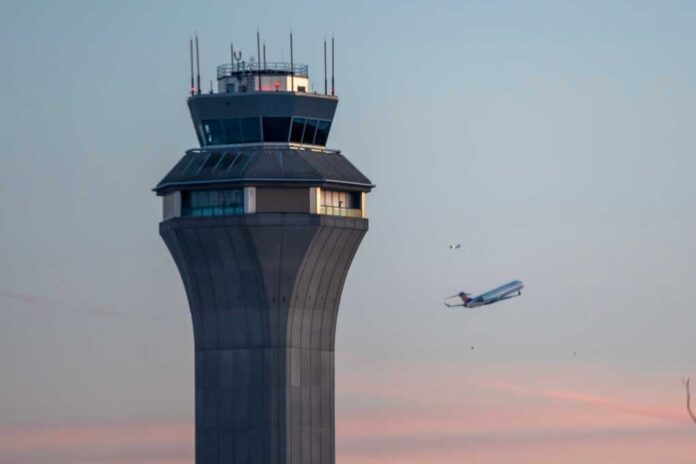Biden’s FAA Change Ignites Safety Fears

America’s air safety faces new uncertainty as the Biden administration’s quiet lowering of FAA hiring standards continues to spark outrage and concern over declining controller qualifications.
Story Highlights
- The Biden administration reduced the FAA’s top testing threshold for air traffic controller applicants, shifting from “best qualified” at 85% to “well qualified” at 80%, igniting safety debates.
- Officials implemented the change without a broad public announcement, drawing criticism for lack of transparency and risk to public safety.
- Controller shortages, worsened by retirements and high-profile collisions, pressured the FAA to expand hiring—even as concerns mount over candidate quality and washout rates.
- Disagreement persists between current and former officials about whether standards were truly lowered and if safety is being compromised.
FAA Quietly Adjusts Air Traffic Controller Hiring Standards Amid Crisis
In late 2023, internal FAA documents revealed that the Biden administration approved a significant shift in hiring standards for air traffic controller applicants. The change lowered the Air Traffic Skills Assessment (ATSA) exam’s “best qualified” tier from 85% to 80% and replaced it with a “well qualified” tier. Transportation Secretary Sean Duffy later confirmed these revisions, which were quietly implemented despite the critical role air traffic controllers play in maintaining national safety. The move sparked immediate debate among aviation professionals and lawmakers, who questioned both transparency and the potential erosion of candidate quality.
This adjustment was not simply a bureaucratic tweak—it followed a deadly mid-air collision and a nationwide airspace shutdown that exposed severe staffing vulnerabilities. By FY 2024, nearly a third of air traffic control facilities operated below recommended staffing levels, amplifying public concern. Pressure was mounting for the FAA to modernize its systems and expand the workforce rapidly, especially as air traffic grew and experienced controllers retired in record numbers. Past efforts to streamline hiring had already led to higher washout rates, raising questions about the wisdom of lowering qualification thresholds during a crisis.
Key Stakeholders and Political Tensions Over Safety and Standards
The change reverberated through key organizations and agencies. The FAA and U.S. Department of Transportation (DOT) are responsible for policy and workforce management, while the National Air Traffic Controllers Association (NATCA) and Congress provide oversight and advocacy for safety. Sean Duffy, now DOT Secretary, emphasized the urgent need for rapid hiring but also called for restoring higher testing standards. In contrast, former Secretary Pete Buttigieg denied that certification standards were lowered, focusing instead on increased funding and expanded training. This disagreement highlights ongoing tension between operational urgency and the preservation of rigorous standards—a core conservative concern.
Controller candidates, trainees, and existing staff are directly affected. Many fear that admitting less qualified applicants could jeopardize safety and increase attrition rates, putting more pressure on already overworked teams. Airlines and passengers stand to suffer from staffing-related delays and potential risks, while public confidence in air travel safety hangs in the balance. Congress continues to scrutinize the FAA’s actions, underscoring the political stakes and accountability demands from both sides of the aisle.
Implications for Safety, Workforce Quality, and Conservative Values
Short-term, expanding hiring may ease controller shortages and reduce flight disruptions, but admitting less-prepared candidates risks higher washout rates and diminishes operational integrity. Long-term, if standards remain diluted, the nation’s airspace safety could face sustained threats, prompting calls for comprehensive reforms and greater oversight. For conservatives, the quiet lowering of standards epitomizes frustration with “woke” bureaucratic agendas, government overreach, and policies perceived as undermining merit-based systems and constitutional protections.
Expert perspectives from the National Academy of Sciences and Government Accountability Office (GAO) warn that legacy staffing models need improvement, but caution against sacrificing entry standards for expediency. NATCA advocates for robust qualifications and adequate staffing, while aviation sector leaders stress the need for modernization and sustained safety oversight. The ongoing debate between DOT officials, FAA administrators, and Congressional committees reflects broader industry concerns and the public’s demand for clear, accountable leadership in safeguarding America’s skies.
Sources:
Controller Workforce Plan – FAA
Aviation Hearing – Heather Krause – Testimony
FAA Releases Updated Air Traffic Controller Safety Inspector Hiring Plans
FAA ATC Hiring
Actions from Federal Government Needed to Alleviate Air Traffic Controller Staffing Shortages at Many Facilities, Says New Report


